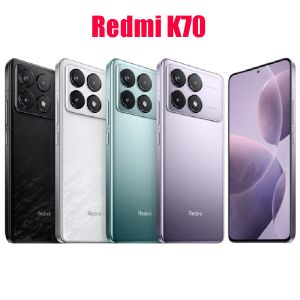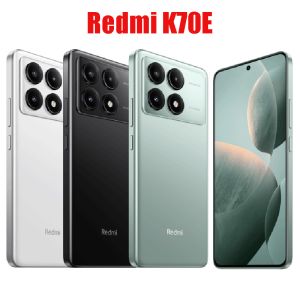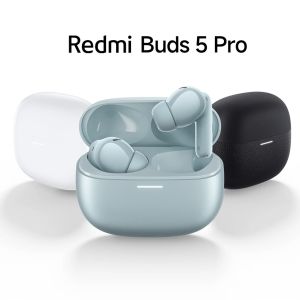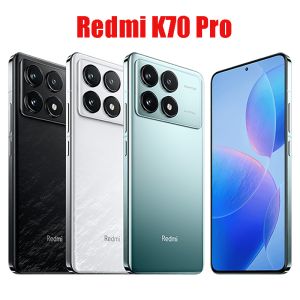In the past, Redmi tended to be criticised for poor quality, using plastic centre frames, plastic back covers and so on, and this year it seems like they wanted to change that impression, and so they came up with this new Redmi K70 Pro.
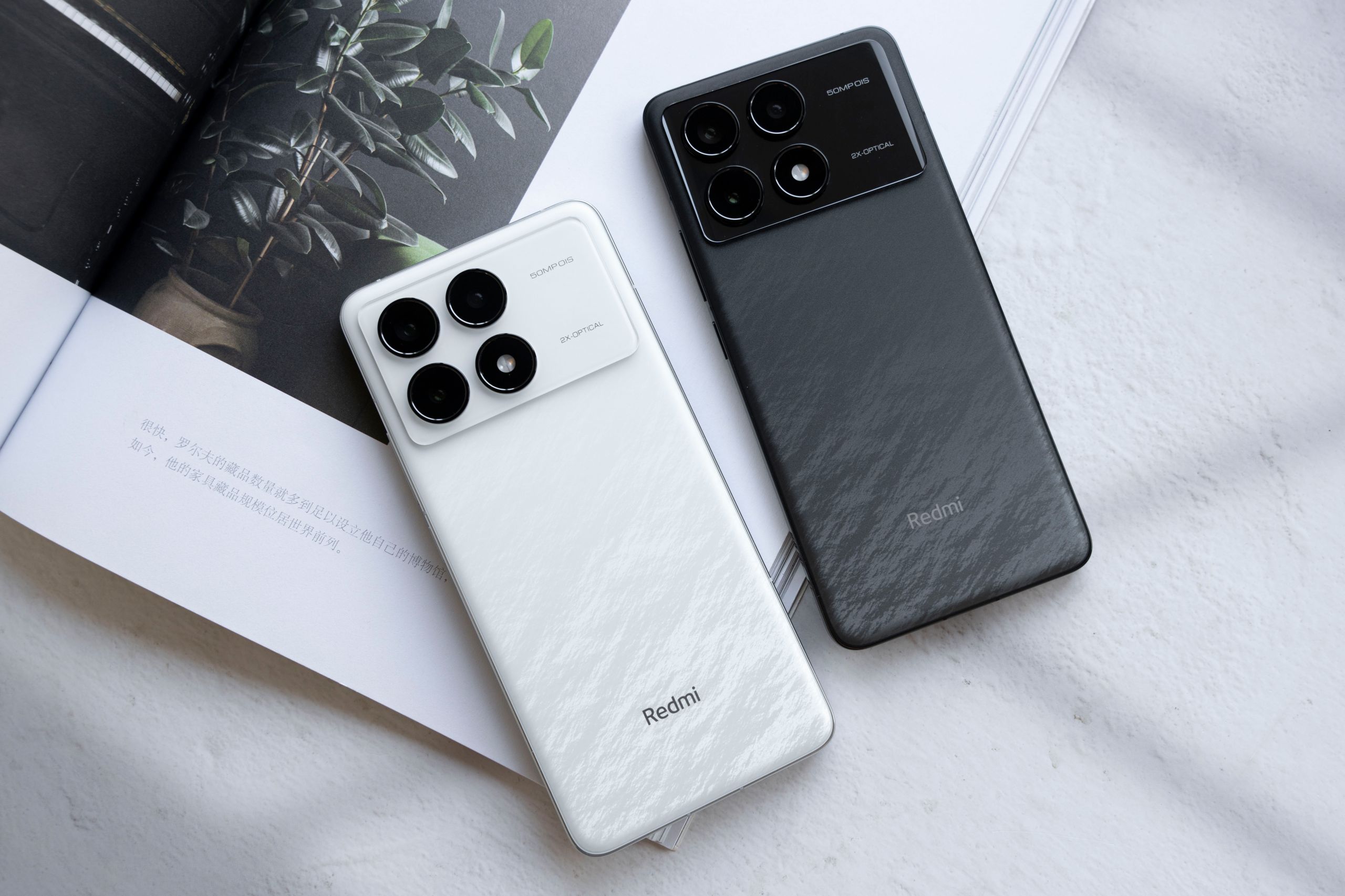
The first impression I had when I got this phone was that this is the phone that netizens want, with a flagship chip, a 2K high quality screen, a large battery with fast charging, and decent camera hardware. All aspects of the configuration, all matching. Add to that a right-angled metal centre frame and a very nicely textured frosted glass back cover, and the texture of the Redmi K70 Pro, for once, is vastly improved.
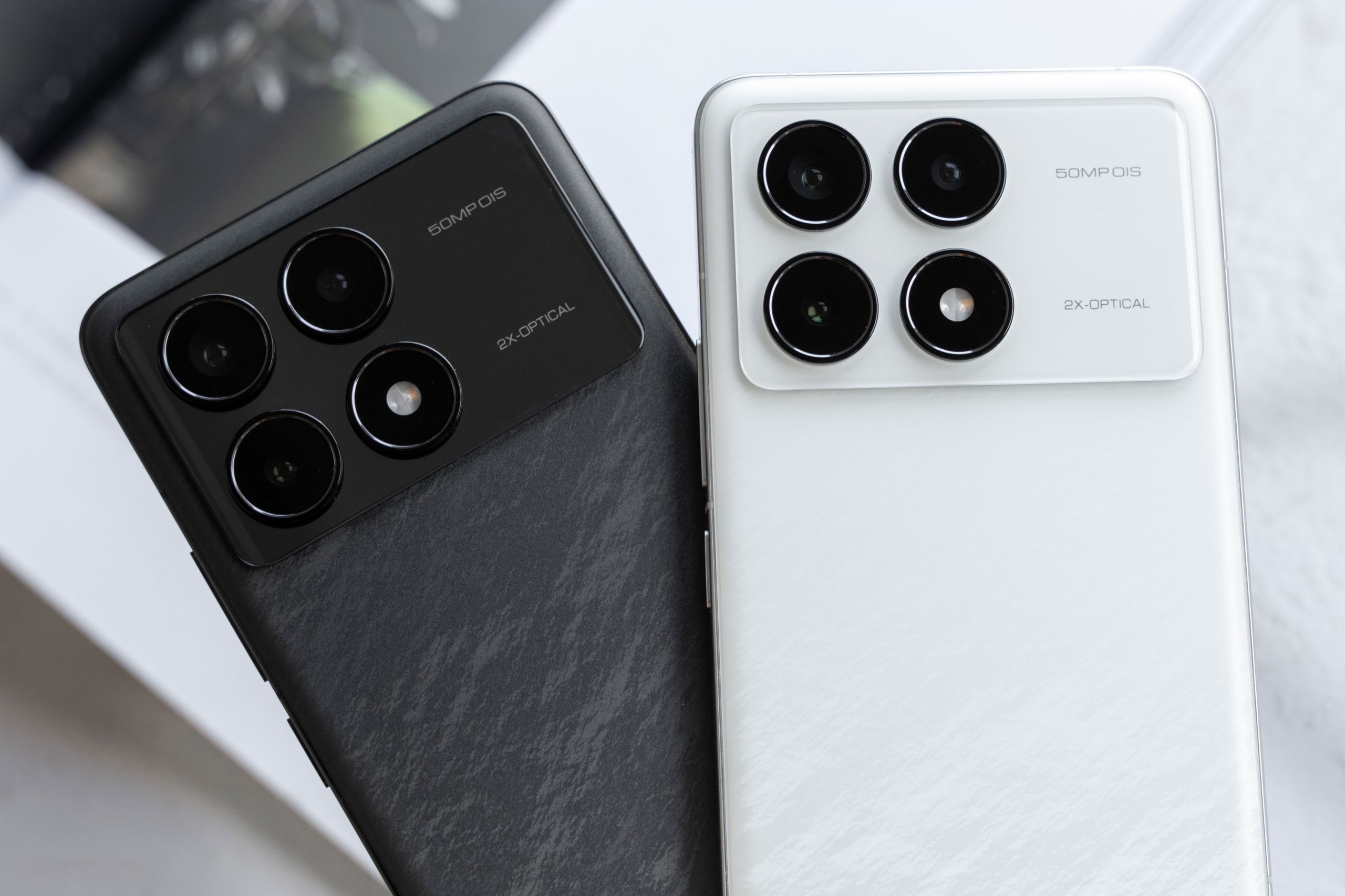
Now that we're talking about texture, let's take a look at the exterior. The Redmi K70 Pro's exterior feels like a "high-end design for the masses", using the back panel design of the Xiaomi MIX Fold3, a $10,000 folding flagship, on Redmi's flagship, and re-designing the details of the DECO section. A large piece of glass DECO has been put on, making the three rear lenses seem to hover above the back cover, and the transparent glass looks cleaner, while the edges of the DECO have been hyperbolically curved, so that it won't pinch your hand when gripping it horizontally.
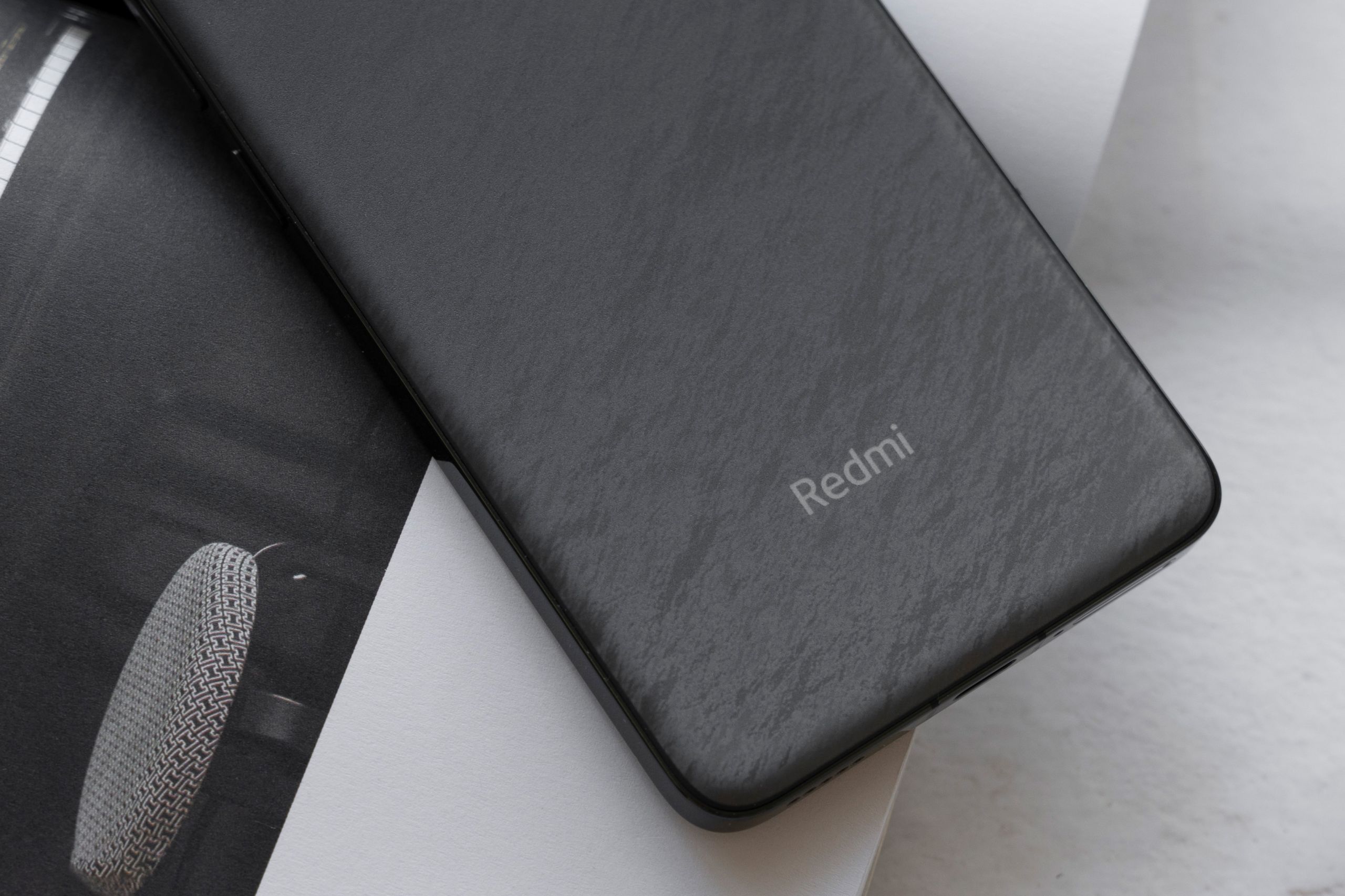
The colours we've got are called Ink Feather and Clear Snow, corresponding to black and white respectively, and these two colours aren't pristine either, as there's a hidden basalt texture in the back panel, which is visible by turning the phone around, and is still very high quality when you look at it in detail. The Snow and Clear colour scheme also has a hidden texture, which looks like it's on top of a snow-covered field, which is also nice. Personally, I would have preferred a solid coloured back plate, although it would have been less ingenious, but it would have been a bit more upmarket.
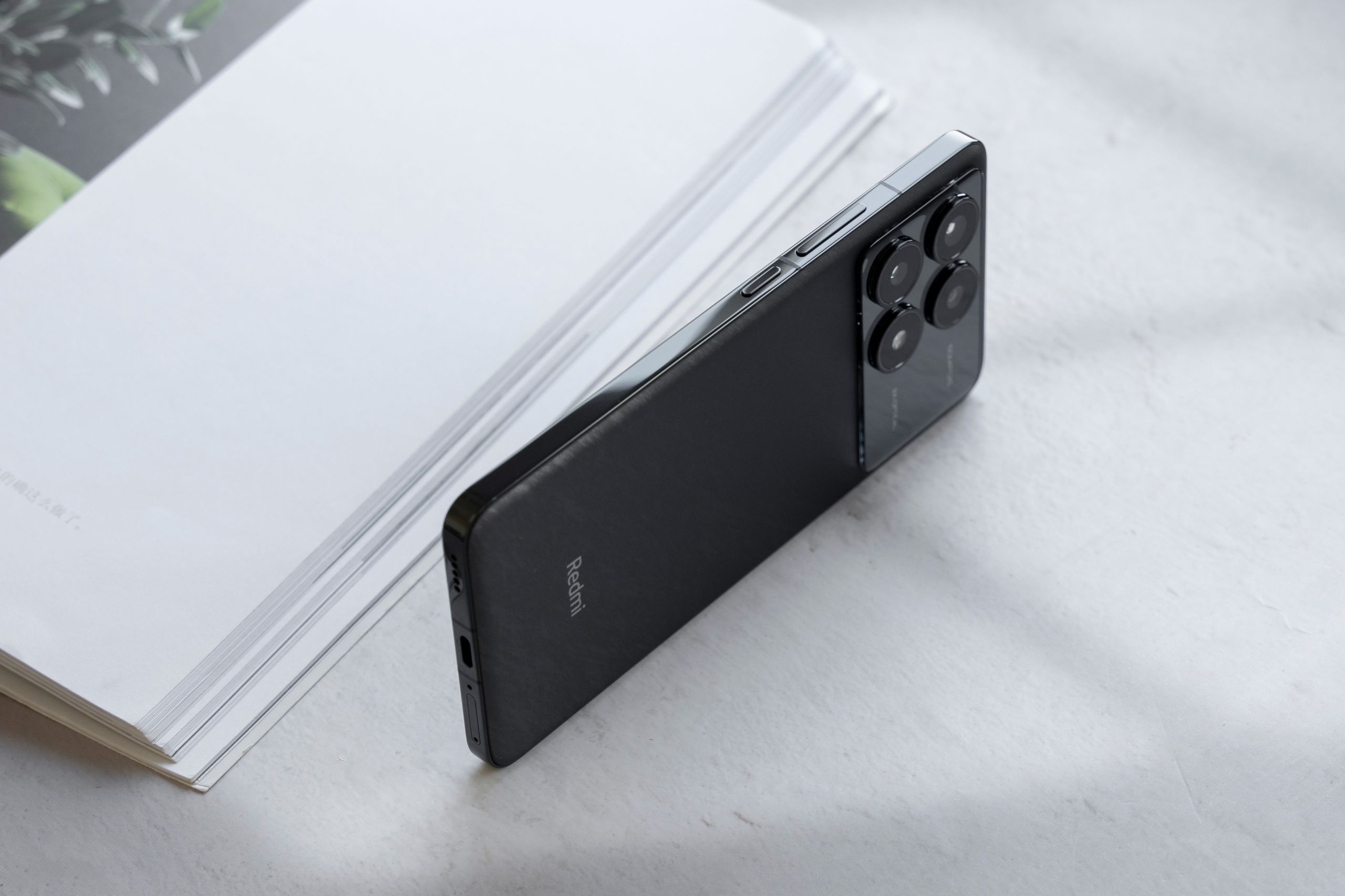
This time around, the centre frame is made of aluminium, which is another time that the K series has used a metal centre frame, and the K70 Pro's centre frame has also gone through a multi-stage polishing and anodising process to give it a glossy finish.
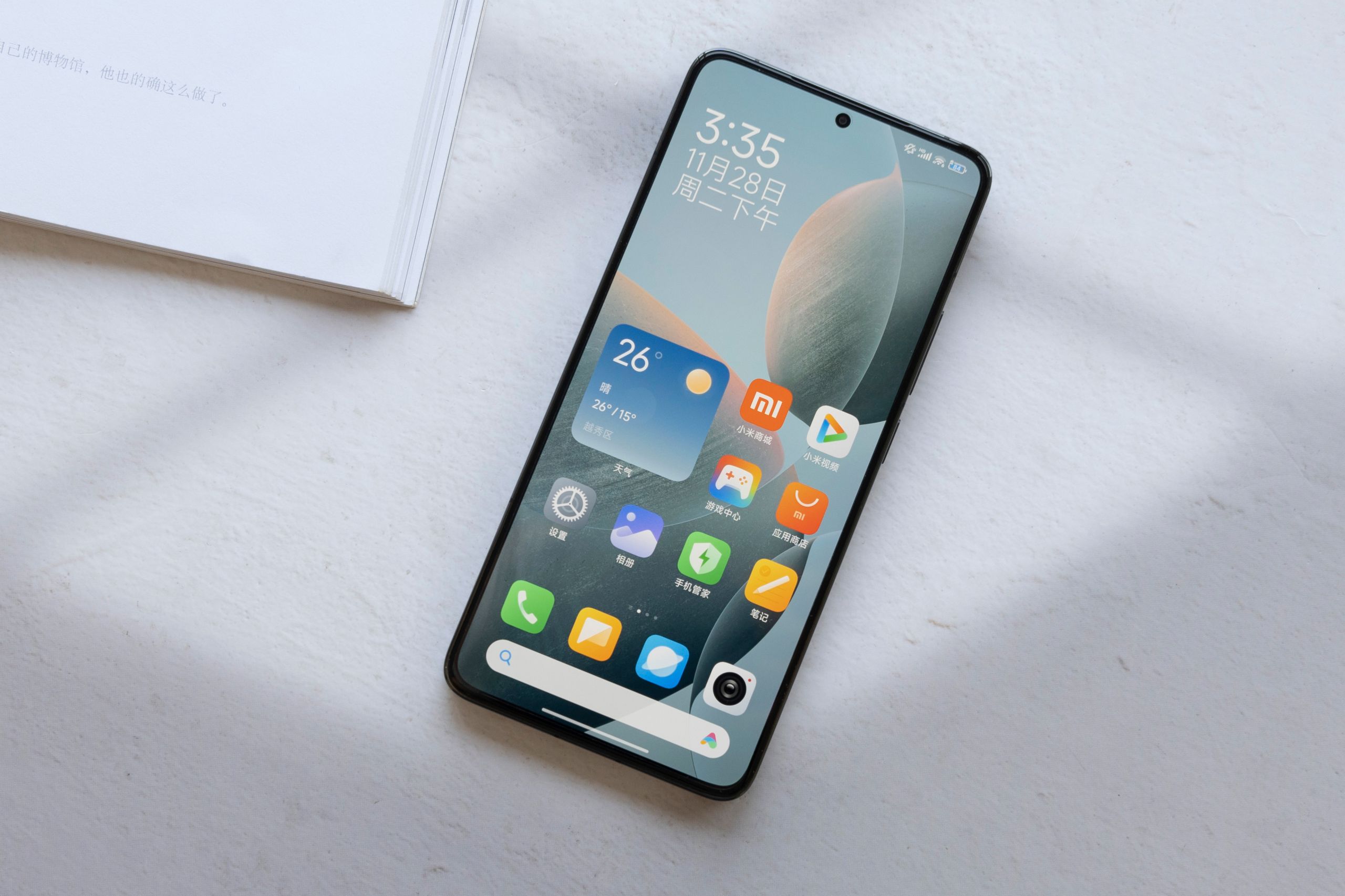
Back to the front, the Redmi K70 Pro finally removes the screen stand and narrows the bezel even further compared to its predecessor, with the narrowest part going down to 1.6mm for a more premium look and feel on the front, and the 74.9mm width of the entire device also improves the grip.
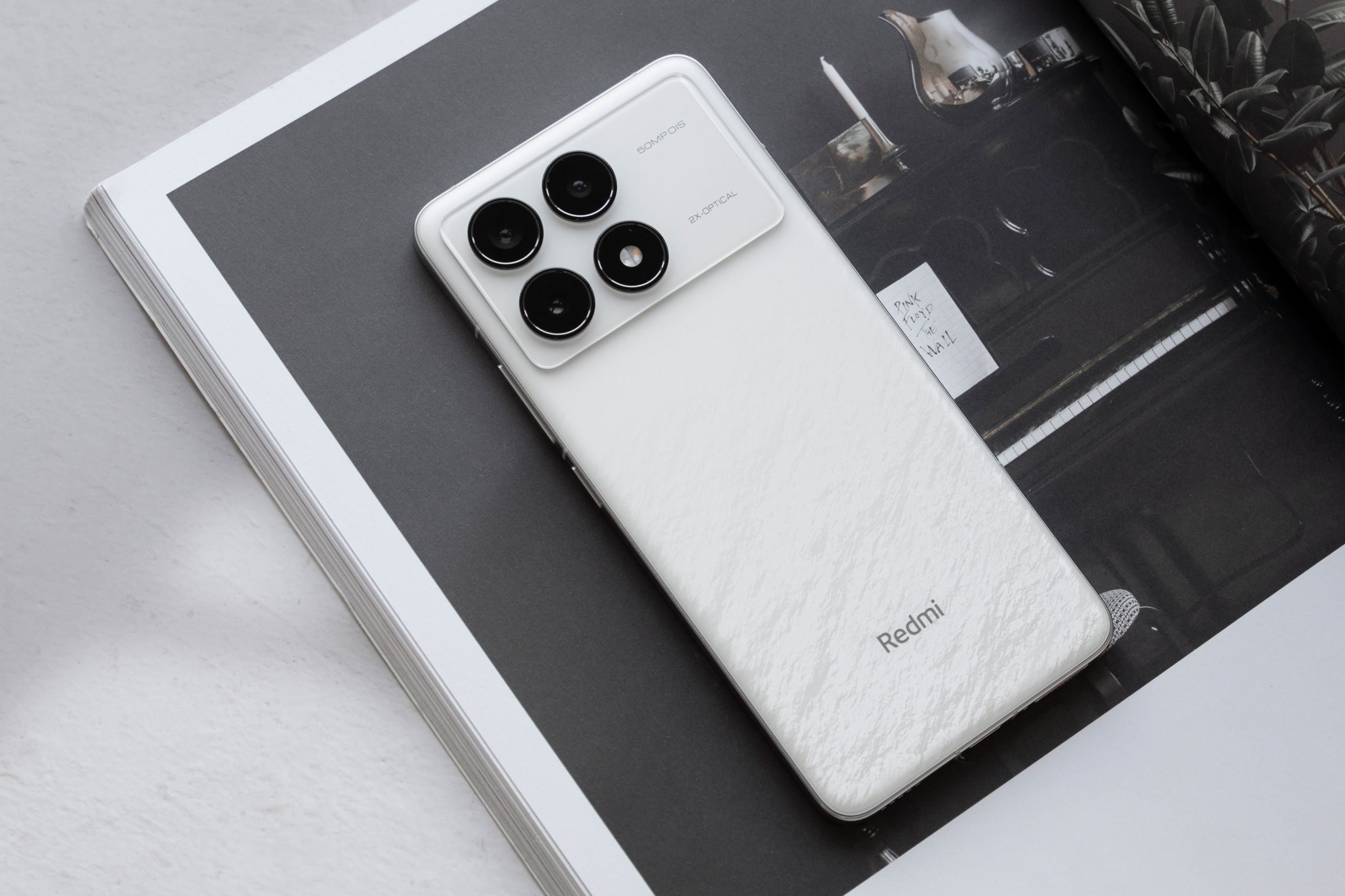
Now that we're talking about the front, how about the quality of the screen this time? On the publicity, Redmi says it's a fully upgraded second-generation 2K Chinese screen. The screen size is 6.67 inches, the resolution is 3200x1440, the pixel density is able to reach 526PPI. the key is that this time the use of C8 light-emitting material from Huaxing Optoelectronics, light-emitting efficiency is greatly improved, the screen brightness can naturally be higher.
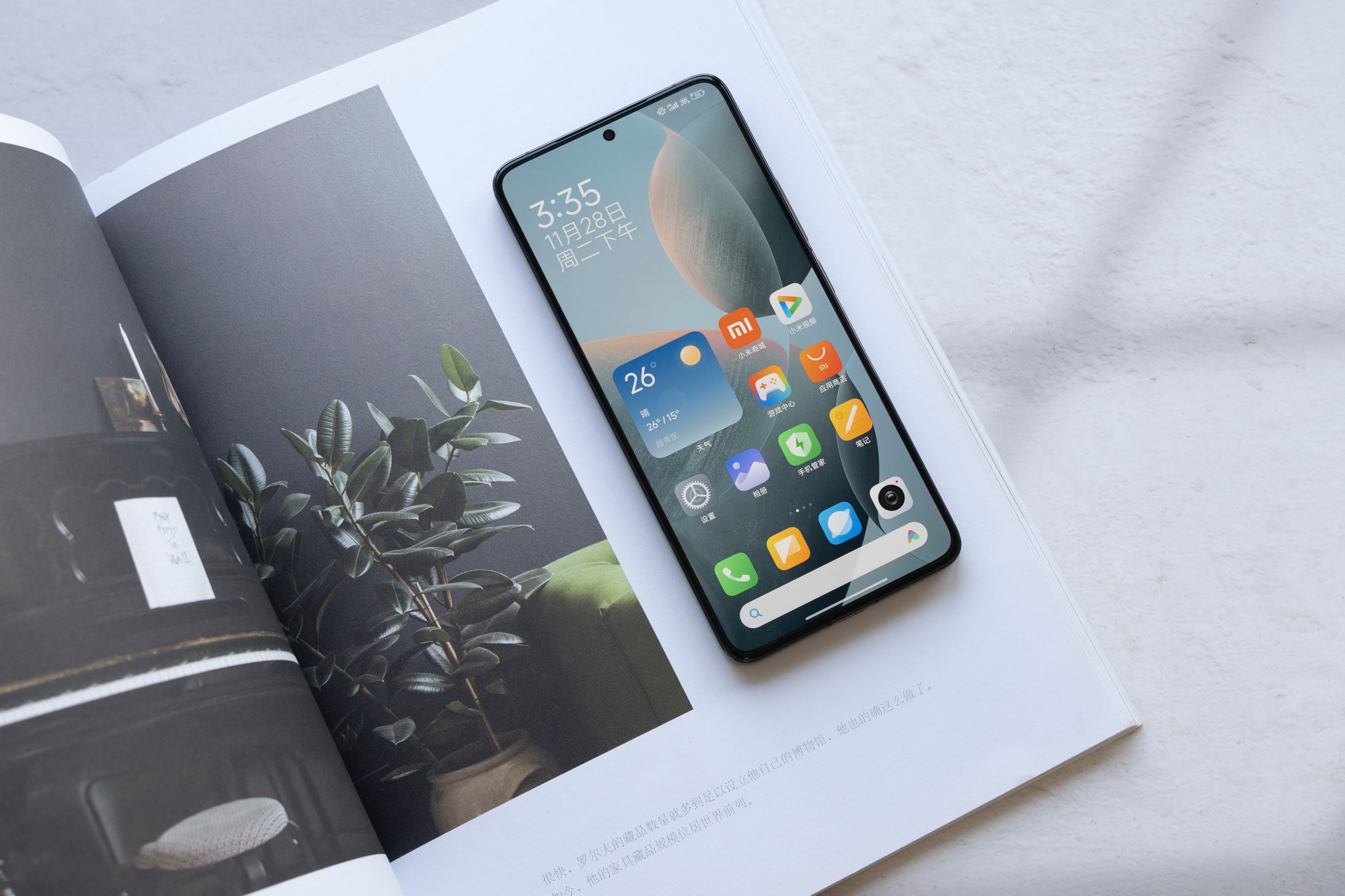
The measured manual maximum brightness of this screen can reach 742nit, HDR inspired brightness of 1280nit, the theoretical peak brightness can even go to 4000nit, but the test conditions are more demanding, or need more professional equipment to be able to test out, and this value is in fact for the average user is not very strong perception, not very meaningful.
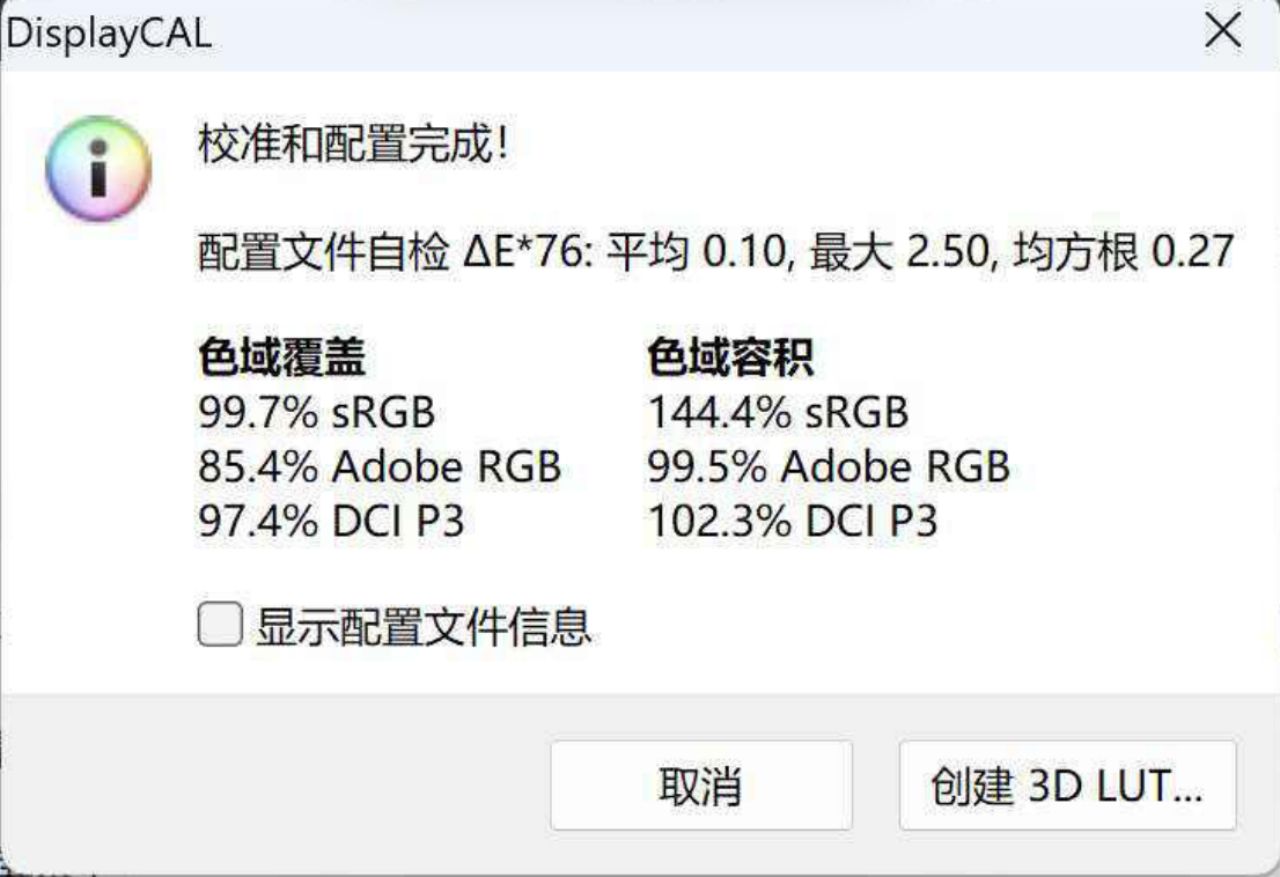

In terms of colour gamut and colour accuracy, the Redmi K70 Pro also performs well, with a measured colour gamut coverage of 97.4% DCI-P3, 99.7% sRGB, and a colour accuracy ΔE of 0.28, which is worthy of praise, especially when playing back HDR videos, which also have a very accurate colour rendering.
This time on eye protection, Redmi has also made enough effort, Redmi K70 Pro upgraded to 3840Hz high-frequency PWM dimming, it also supports True Colour Display, 16000 levels of automatic brightness adjustment, and Rhythmic Eye Protection Mode, which reduces the damage of blue light and protects your eyes even more.
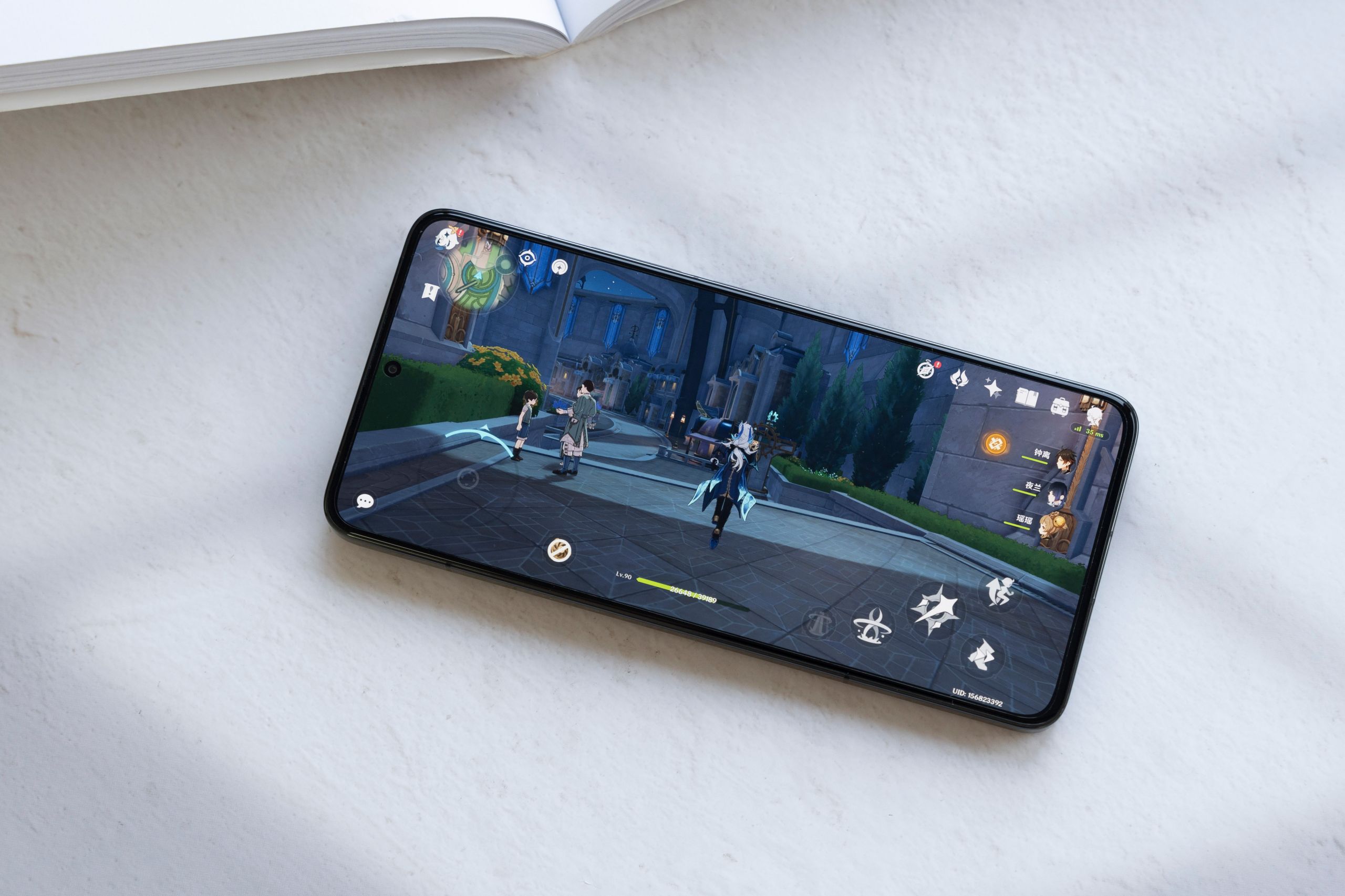
After talking about the screen, how about the performance of the Redmi K series, which has always been known for its performance, and of course the K70 Pro is no exception. This time, it is equipped with the newly released third-generation Snapdragon 8 flagship mobile platform, paired with LPDDR5X RAM and UFS4.0 ROM.
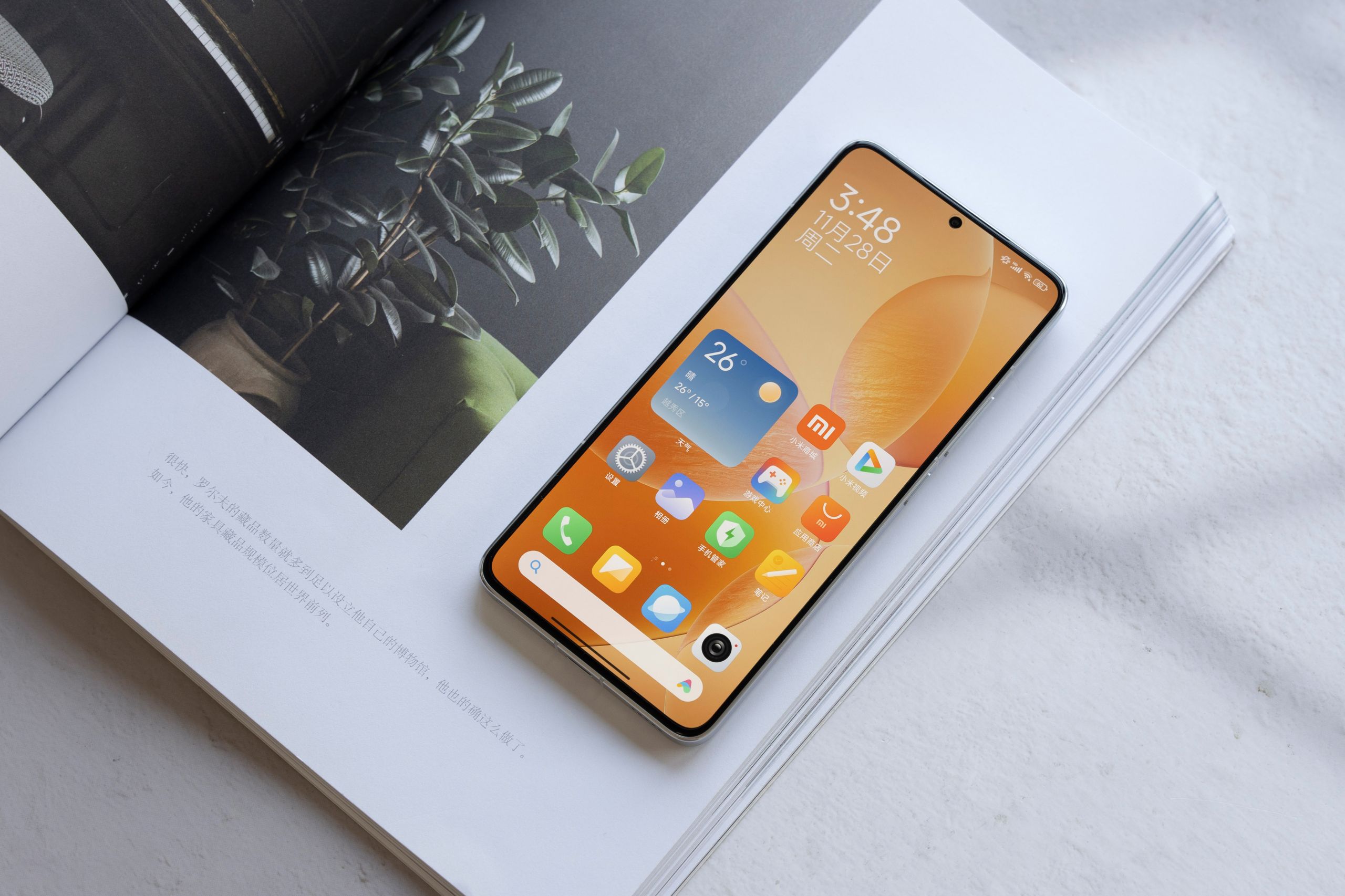
With a chip this powerful, gaming performance must be pretty good, right? This time we'll skip the less stressful Honour of Kings and go straight to intensity to see how Progenitor performs.
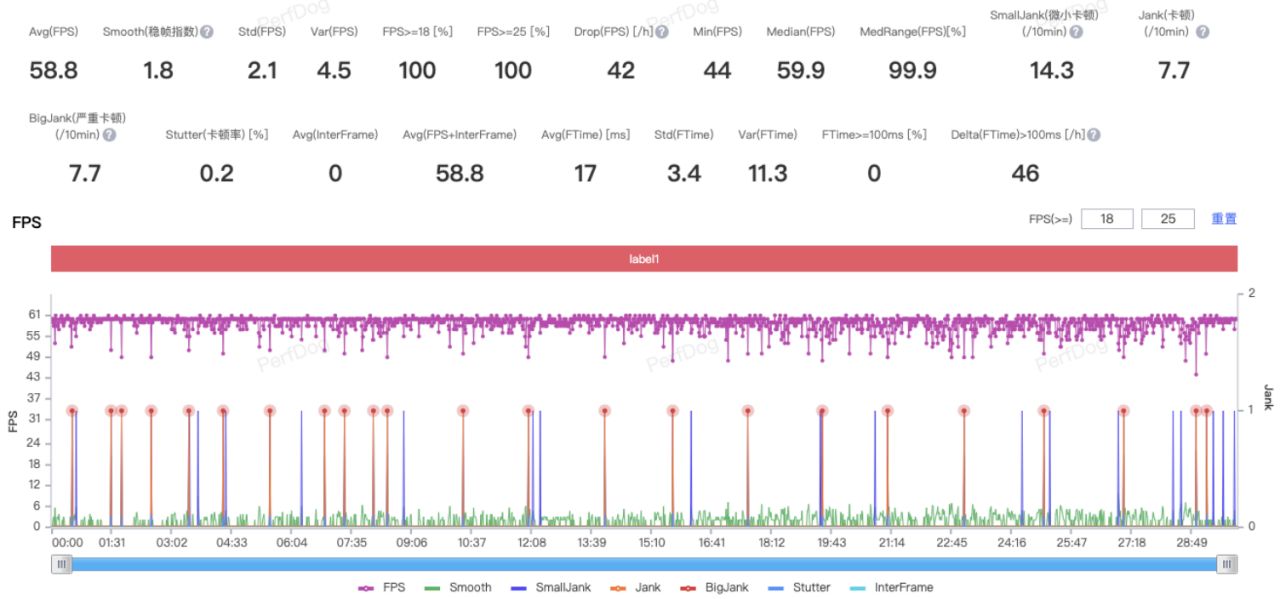
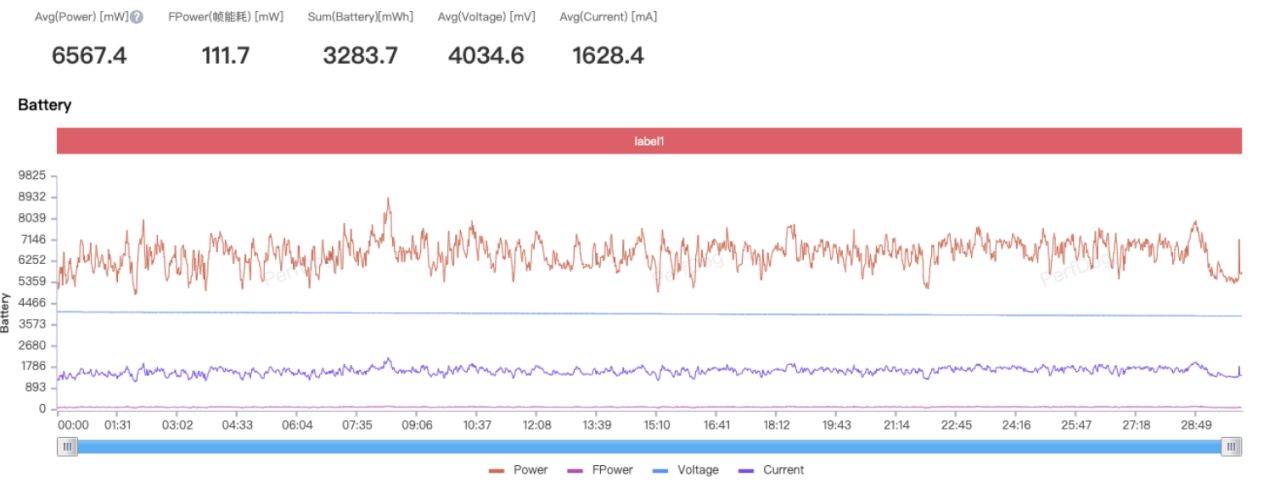
▲Redmi K70 Pro 864P resolution "Original God" frame rate and power consumption performance
In a room temperature of 25 degrees Celsius, the screen brightness is fixed at 194nit, turn on the phone's performance mode, and use the night orchid to wander around in the city of Sumeru to run the map, after 30 minutes, the frame rate of 58.8fps, power consumption of 6.6W, the temperature of the front of the phone is 43.5 degrees Celsius, the back of the phone is 44.4 degrees Celsius, and the consumption of power is 18%. This seems to be a pretty normal result for a Snapdragon 8Gen3, and should be considered as standard.
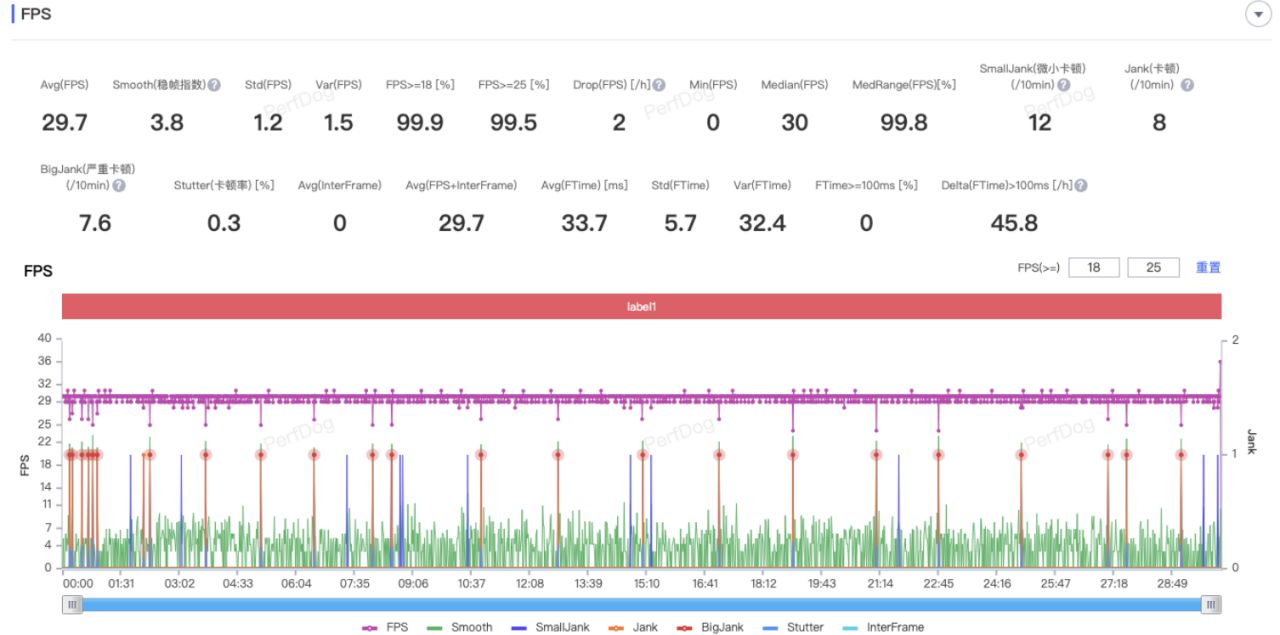
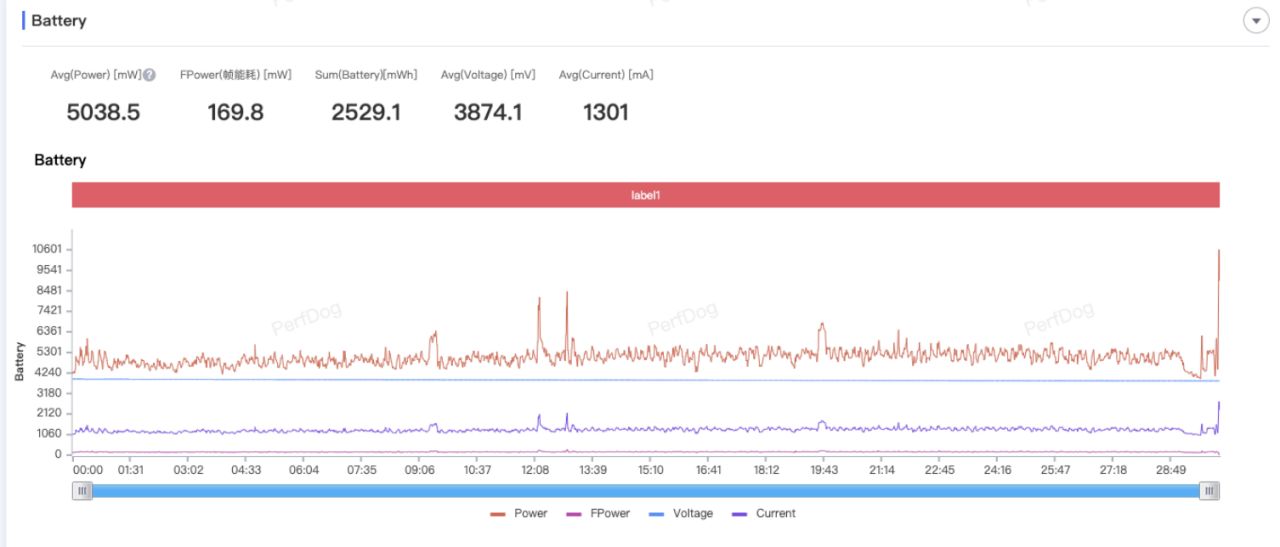
▲Redmi K70 Pro 1200P resolution ProtoGods frame rate and power consumption performance
The K70 Pro is the first of its kind in the world to be used as a mobile phone, and it is the first to be used as a mobile phone in the world," he said. It seems that power consumption and temperature will even decrease after the resolution increase frame rate drop, and the performance is quite stable.
In fact, when the Xiaomi Mi 14 Pro was launched, it was advertised that you could play ProtoGod at 1200P, but again, it was locked at 30fps. At that time, a friend asked me, later will there be a way to unlock 60fps to play it? The Redmi K70 Pro is the first of its kind in the world to offer this mode, but it has to be connected to a cooling clip to unlock the 1200P+60fps "full-blooded" ProtoGods experience.
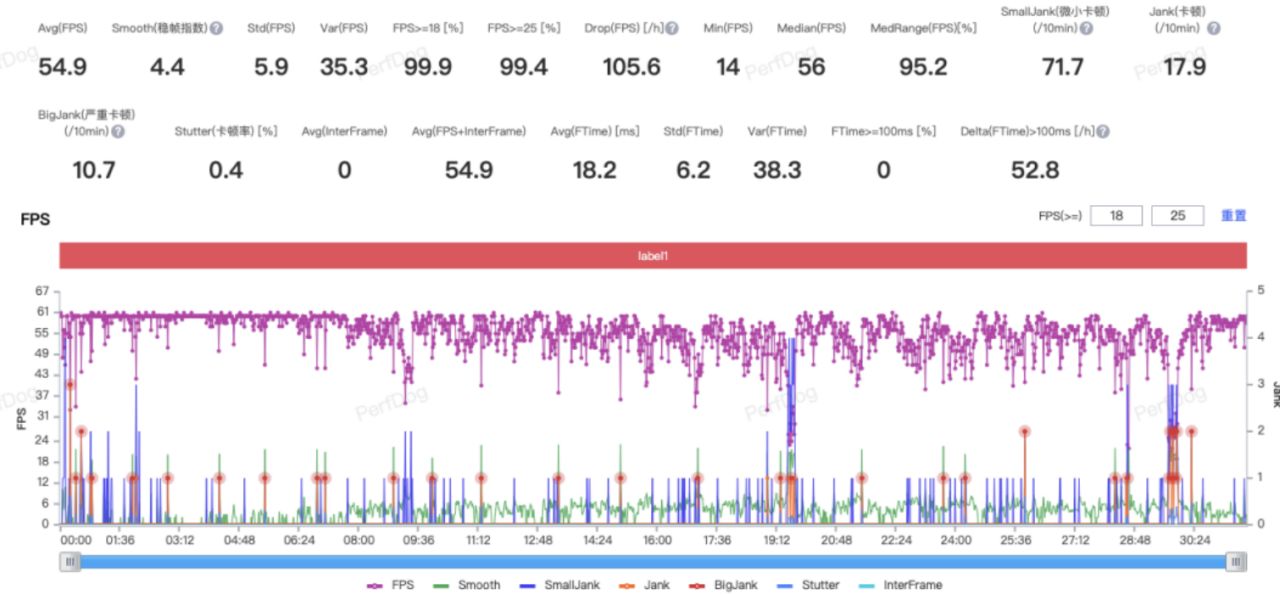
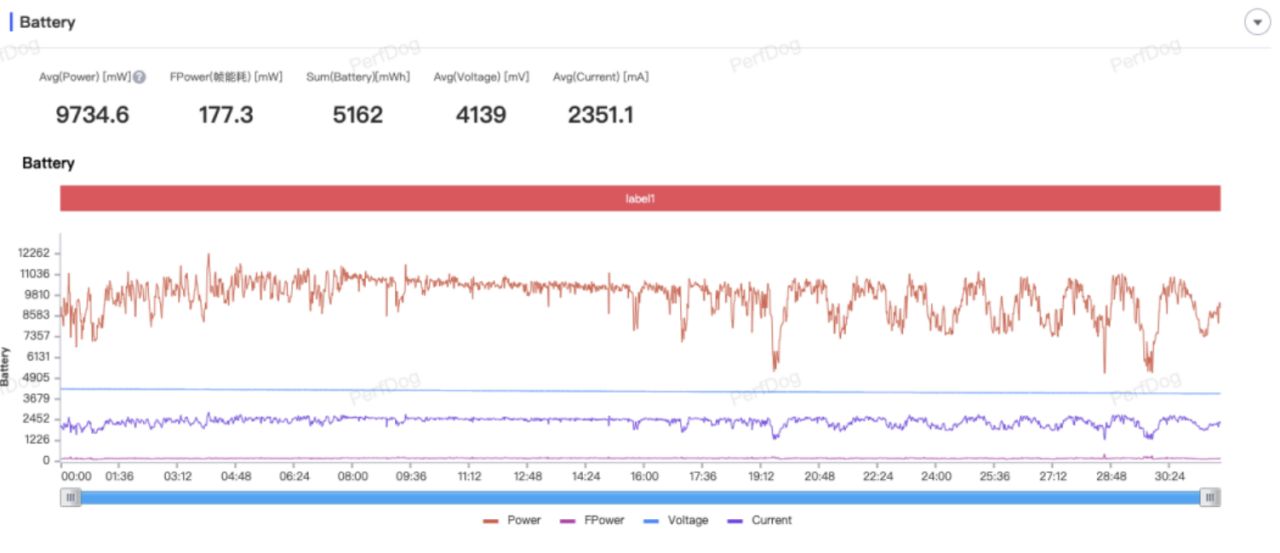
Redmi K70 Pro 1200P 60FPS ProtoGods frame rate and power consumption performance
The Redmi K70 Pro's performance in this mode is not bad, but it's a good idea to run the K70 Pro for 30 minutes under the same test conditions. In the same test conditions to run 30 minutes of the original God, the first 7 minutes of the phone can still maintain an average of about 58fps, and then began to overheating downclocking appeared to drop frames, and finally ran an average of 54.9fps, power consumption average 9.7W, power consumption of 29%.
It seems that the pressure for the current Snapdragon 8Gen3 is still quite big, power consumption has gone to nearly 10W, the frame rate performance did not pull full, it seems that the next generation of upgrades found, as long as you can stabilise 1200P 60fps to play the original God, then the Snapdragon 8Gen4 will be able to become.
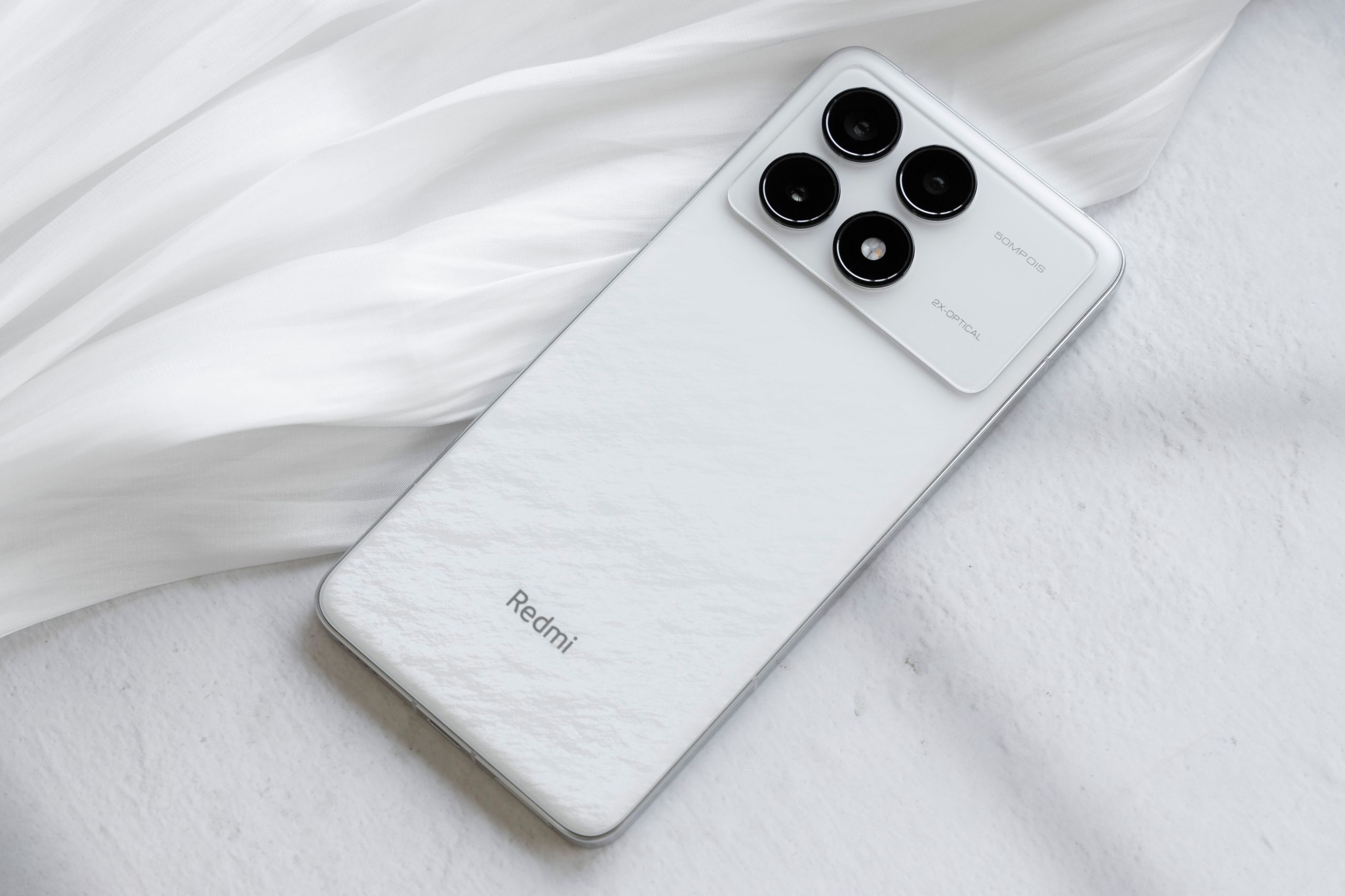
Performance we test here, I believe the performance of the Redmi K70 Pro you do not need to have any worries, so how is the image performance of this main performance machine? I think this time Lu wants to make it an "all-round flagship", and we can see Redmi's determination in the imaging hardware.
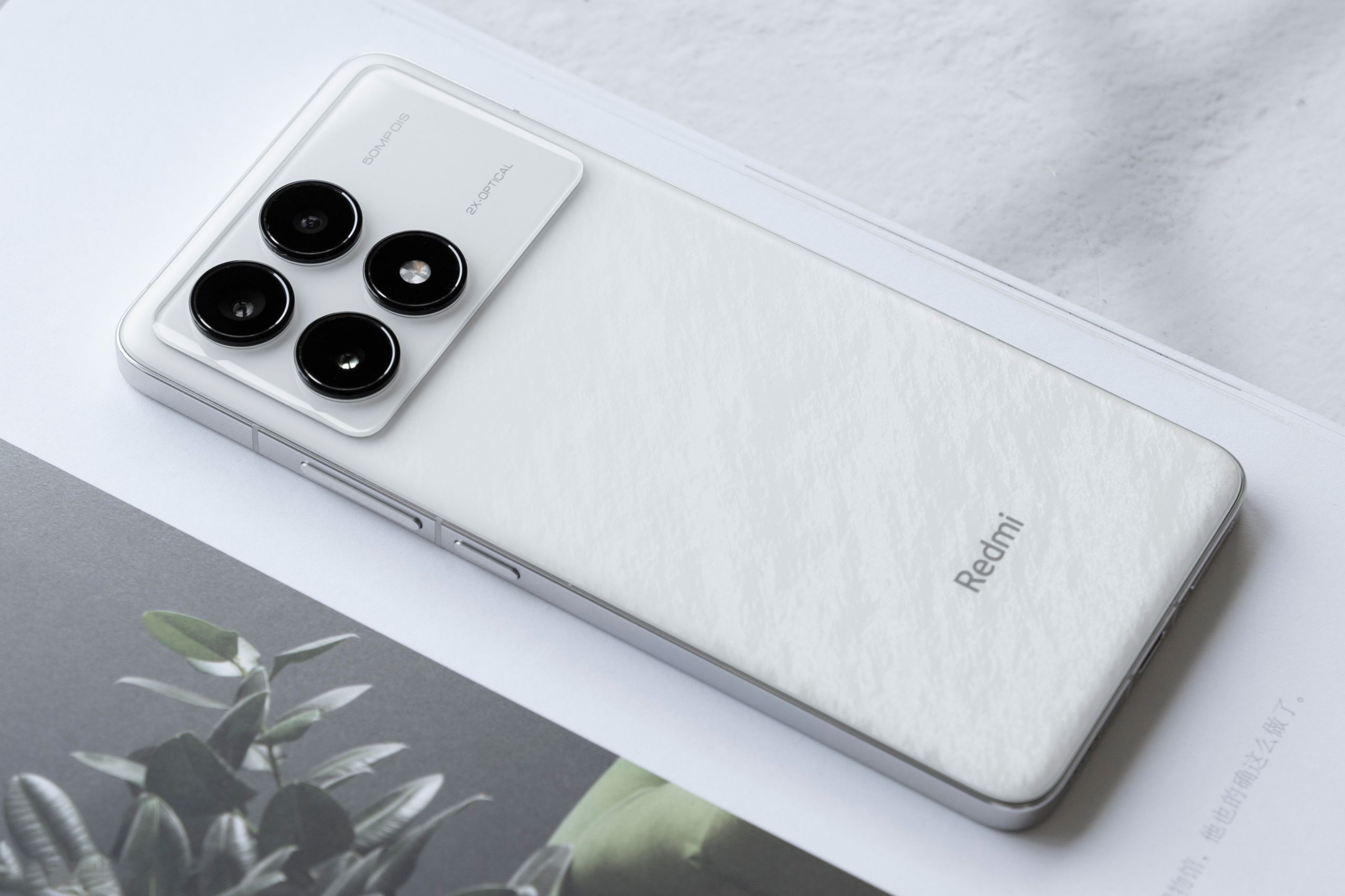
The main camera is equipped with a Xiaomi imaging brand Light Hunter 800 sensor, 1/1.55-inch large bottom, Light Hunter series sensors have ultra-high still image quality, super video capabilities, native HDR, ultra-high throughput and other capabilities, but the brightest feature has to be the support for dual native ISO Fusion Max, which brings up to 13.2EV of ultra-high dynamic range. This time there's also a portrait lens that supports double optical zoom with a Light Hunter 400 sensor and 50 effective megapixels.
The addition of the Xiaomi Imaging Brain gives the Redmi K70 Pro decent shooting capabilities as well. Let's get straight to the sample photos.
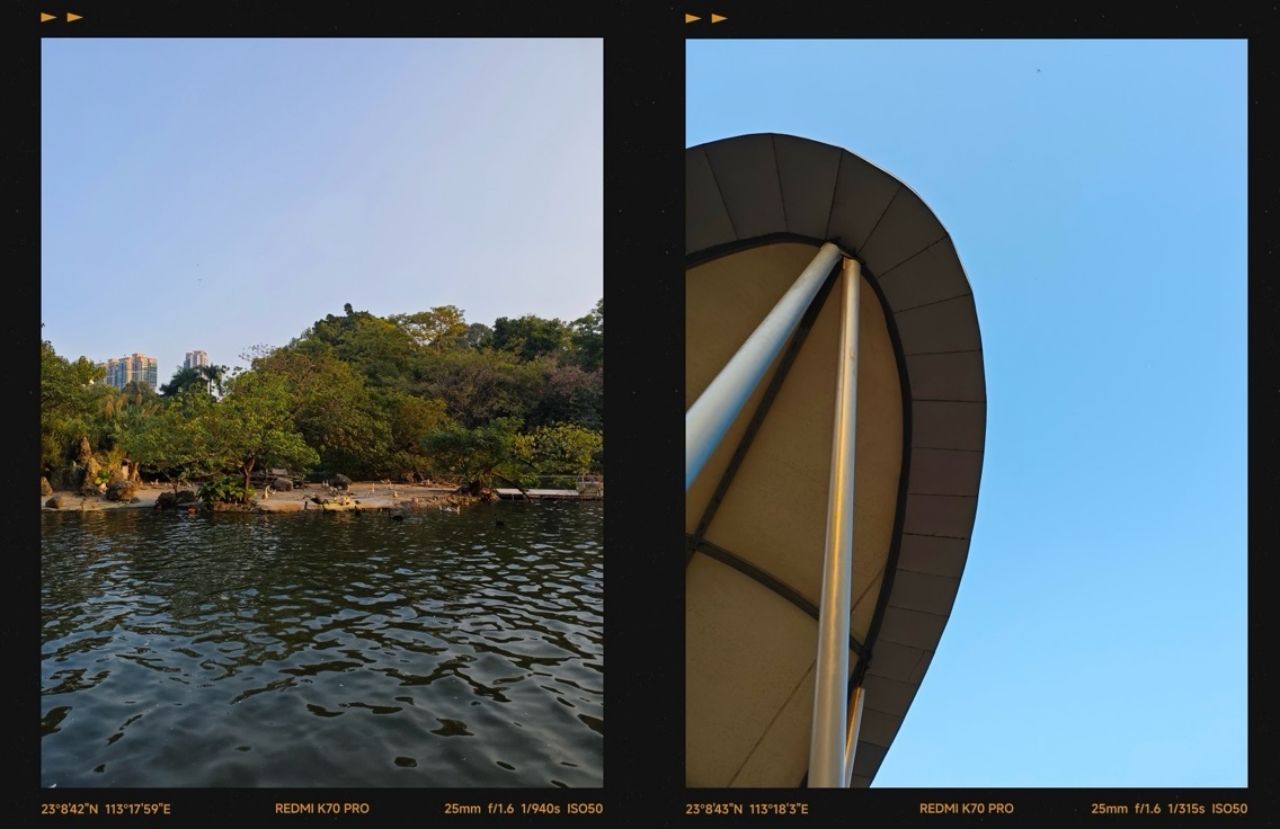
▲Redmi K70 Pro main camera samples
The K70 Pro's main camera does a good job of showing off the colours in the daytime when there's plenty of light, and it doesn't appear to be overly saturated, and the foliage in the distance retains its detail and doesn't look muddled. The watermarking of the film, which Redmi has been doing for a long time, can greatly enhance the sense of sophistication of the film.
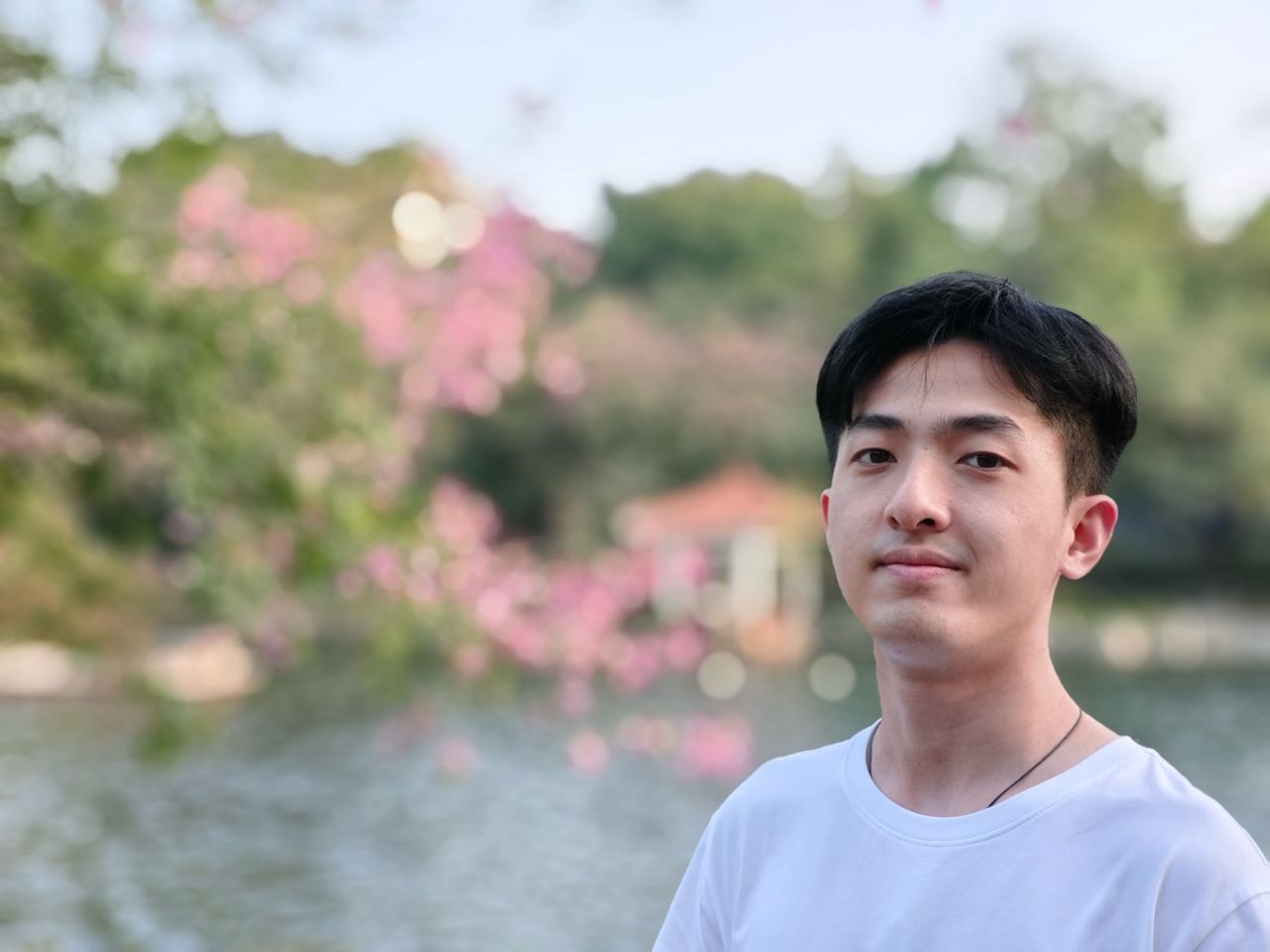
▲Redmi K70 Pro Portrait Mode Samples
The addition of a double portrait lens also gives the Portrait mode an additional 50mm equivalent focal length, Redmi's Portrait mode results feel a bit better than the Xiaomi 14 series, with good edge keying and skin tone rendering of the subject, which is quite usable.
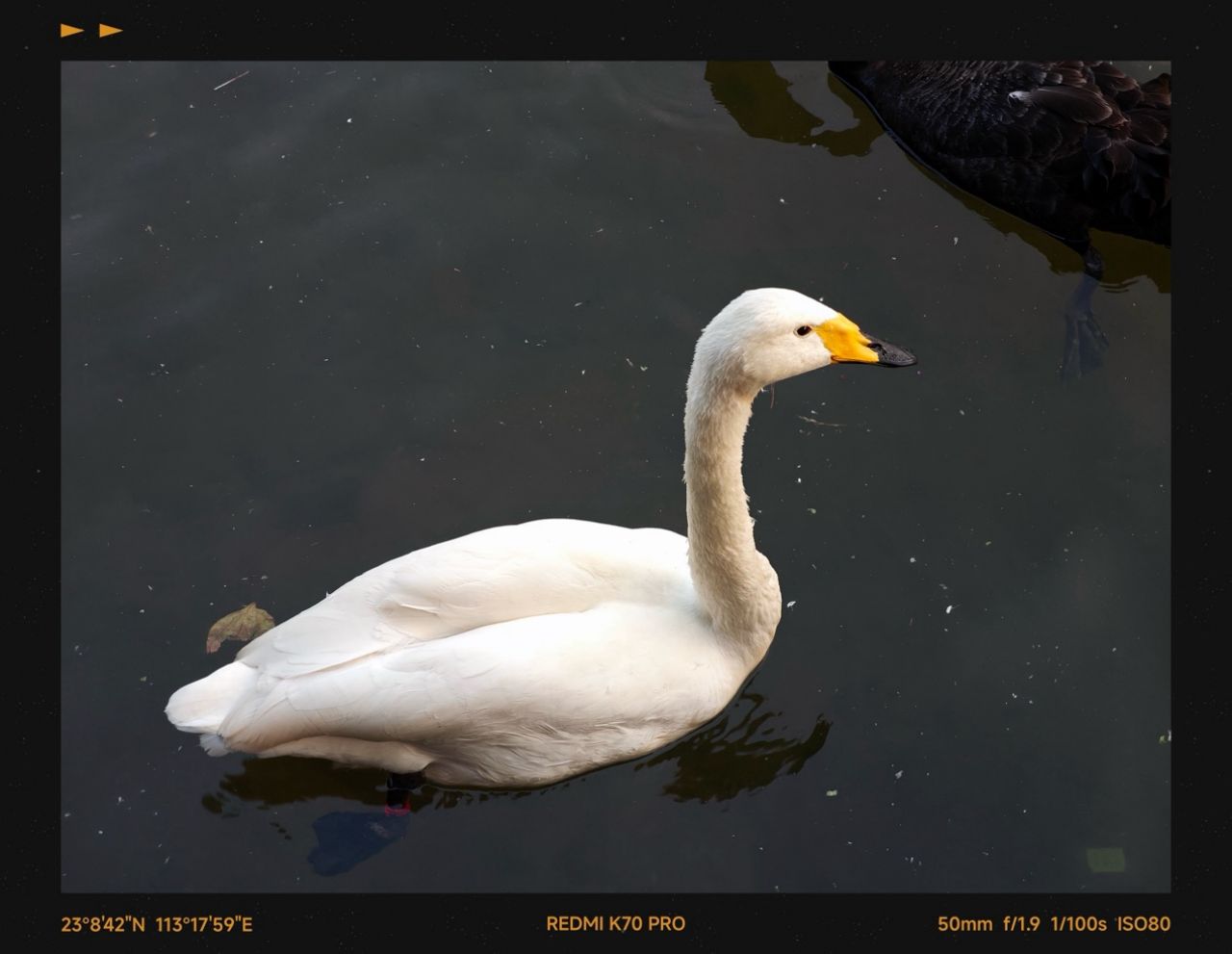
▲Redmi K70 Pro Double Portrait Lens Samples
The K70 Pro is also a great way to get some usable footage of animals in daytime light, and even though there's some sharpening, it's still possible to get a good look at the animals in the image.
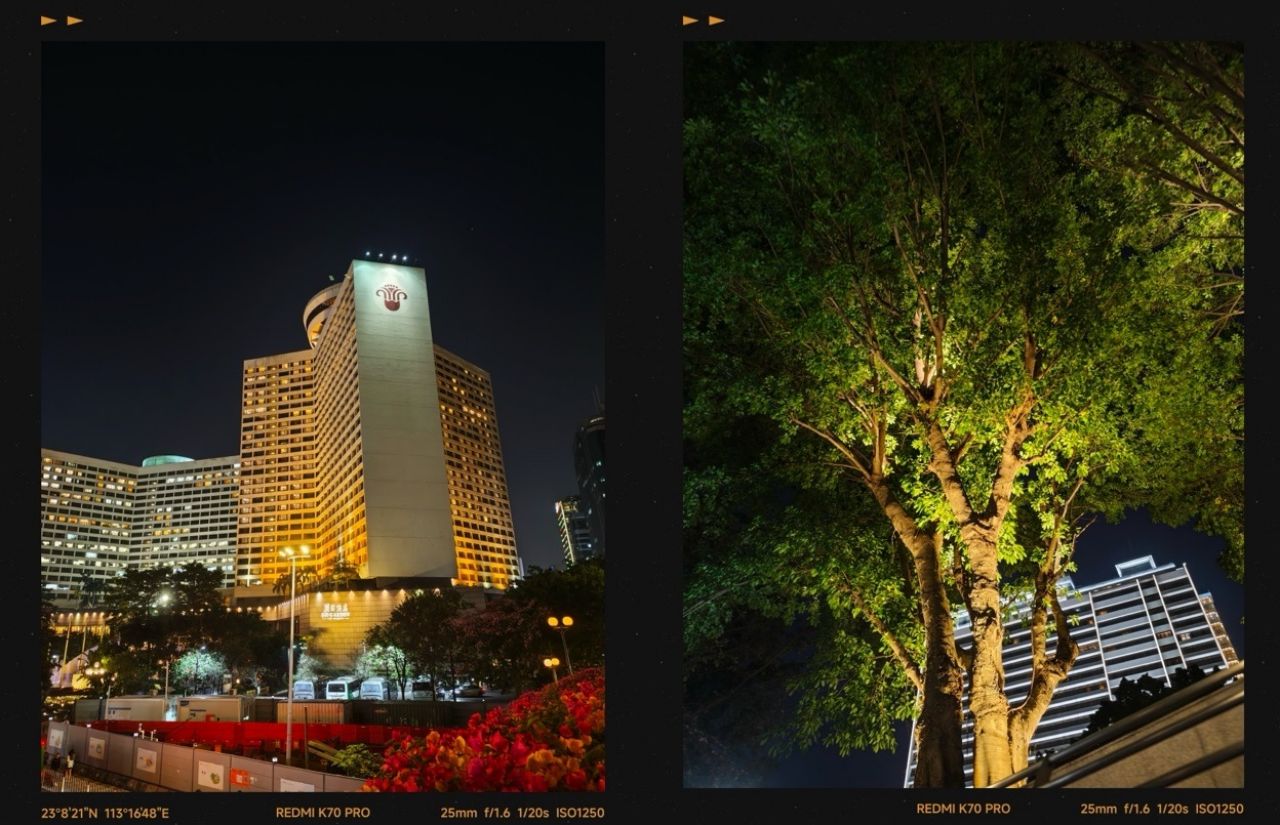
▲Redmi K70 Pro main camera night samples
The K70 Pro's main camera is a great way to get the most out of a nighttime shooter. The main camera is still relatively stable out of the film, both the night sky and the bright part of not too much problem, the only may be to pick the details of the picture is a little bit muddy, but directly sent to the circle of friends, Redmi's perception is still very good.
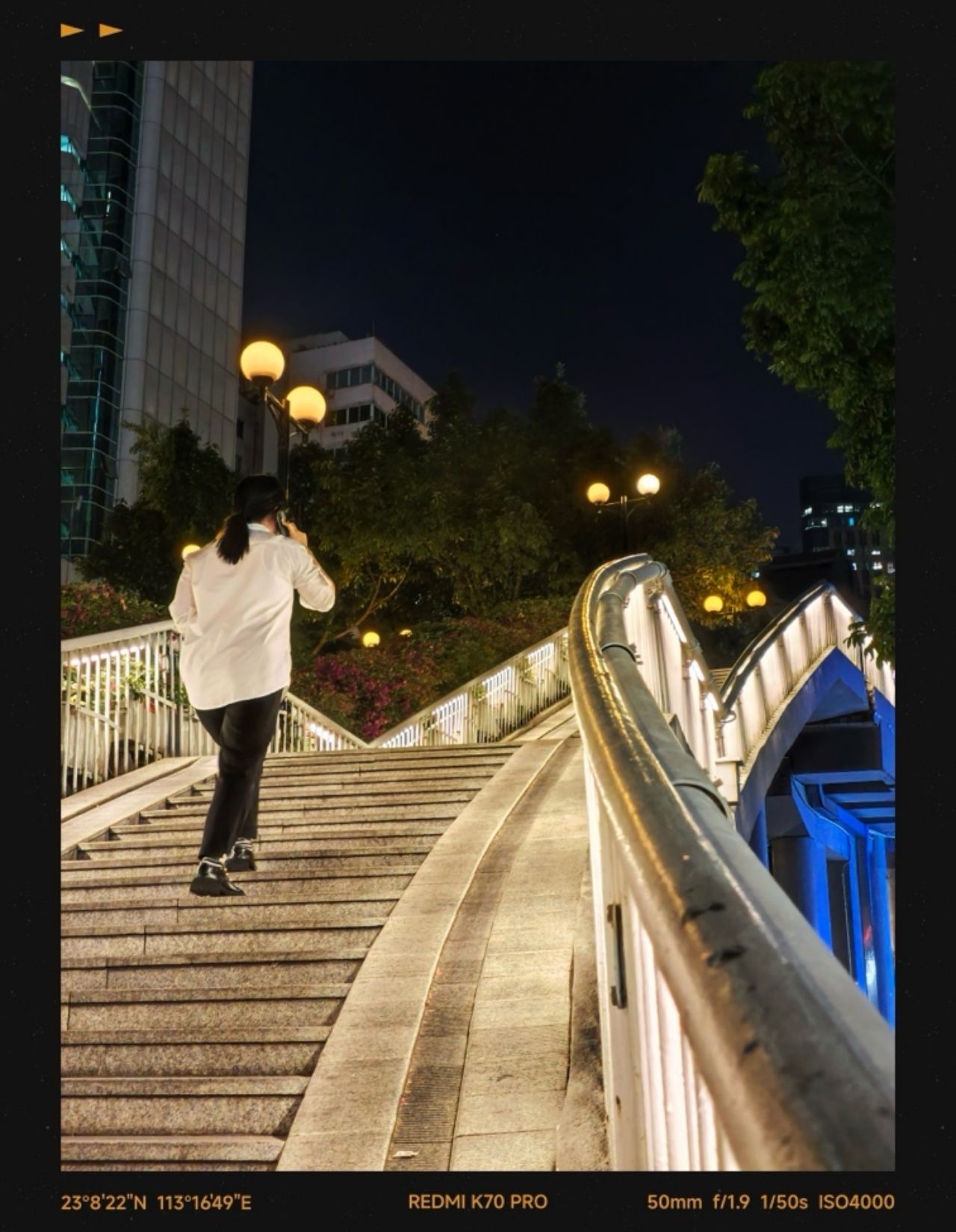
▲Redmi K70 Pro double portrait lens night time samples
The Redmi K70 Pro's double portrait lens doesn't perform as well in low-light situations due to its smaller base, but it doesn't really look like it's going anywhere, so it's still acceptable.
After seeing the sample photos, how do you think the image performance of the Redmi K70 Pro is this time? Personally, I think the result is still OK, and can surpass a lot of machines in the same price range. But this time there is a point I want to complain about, that is, the double portrait lens, Redmi this time the main camera with a good quality of light hunter 800, the equivalent focal length is 25mm, this focal length we all know that in fact, daily shooting is not commonly used, such as the equivalent of 46mm or 50mm will be more practical, but if I want to shoot this focal length, you have to switch to the double portrait lens, and this time the image quality is very good, and the image quality is not very good. However, if I want to shoot at this focal length, I have to switch to a double portrait lens, and the image quality and sensitivity at this time will definitely not be as good as that of the main camera.
One suggestion for Redmi, if the next generation can include a 3.2x lens and set the main camera to a double zoom anchor point, then the shooting experience will be much better, and it will also be able to take full advantage of the excellent quality of the main camera.
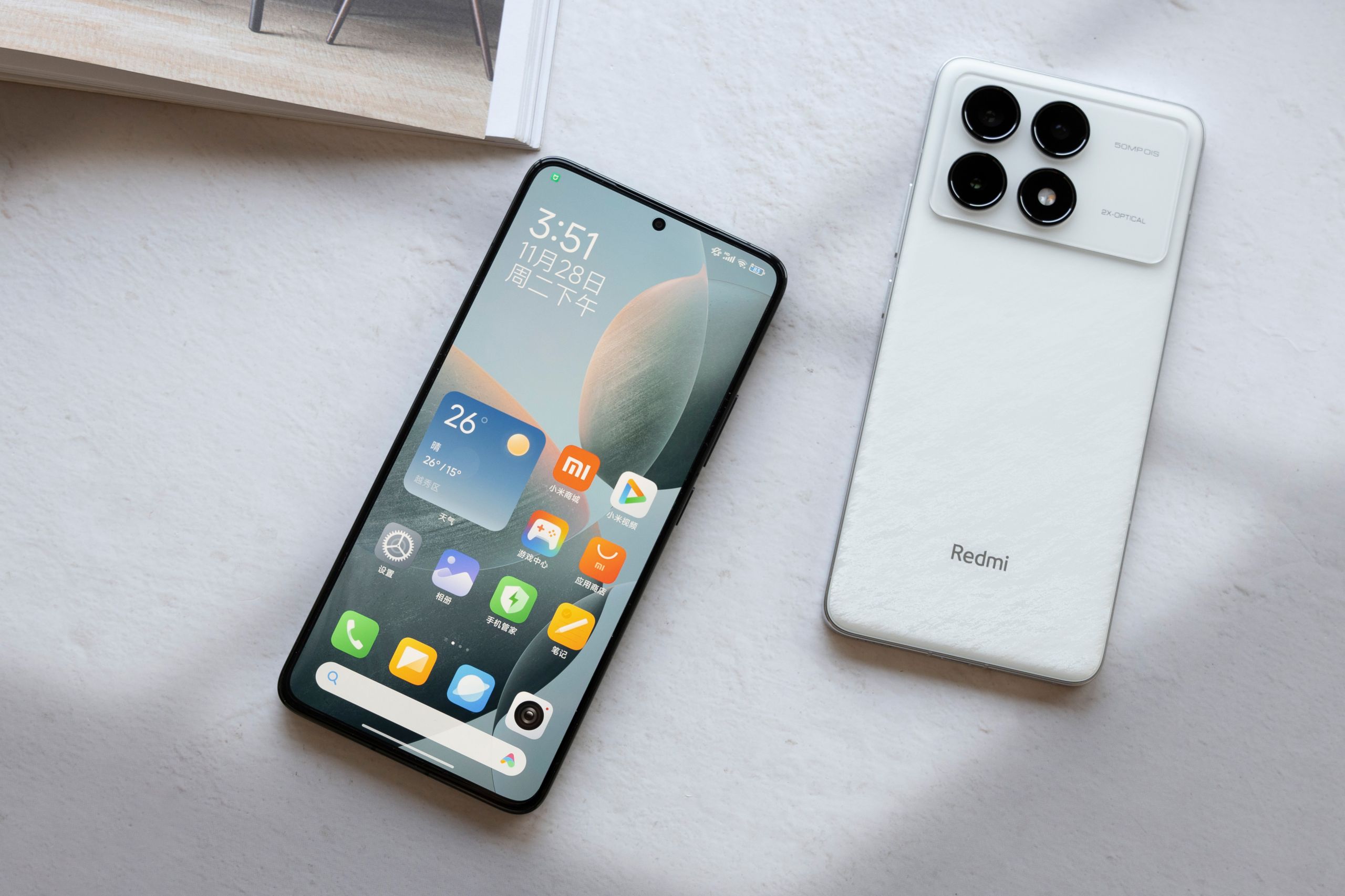
Battery and battery life, Redmi K70 Pro continues the previous generation of 120W fast charging +5000mAh configuration, with self-developed Surge P2 fast charging chip, as well as self-developed Surge G1 power management chip, the actual test can be filled in 19 minutes, and there is no need to worry about the battery life. Unfortunately, compared to the previous generation, the K70 series does not support wireless charging.
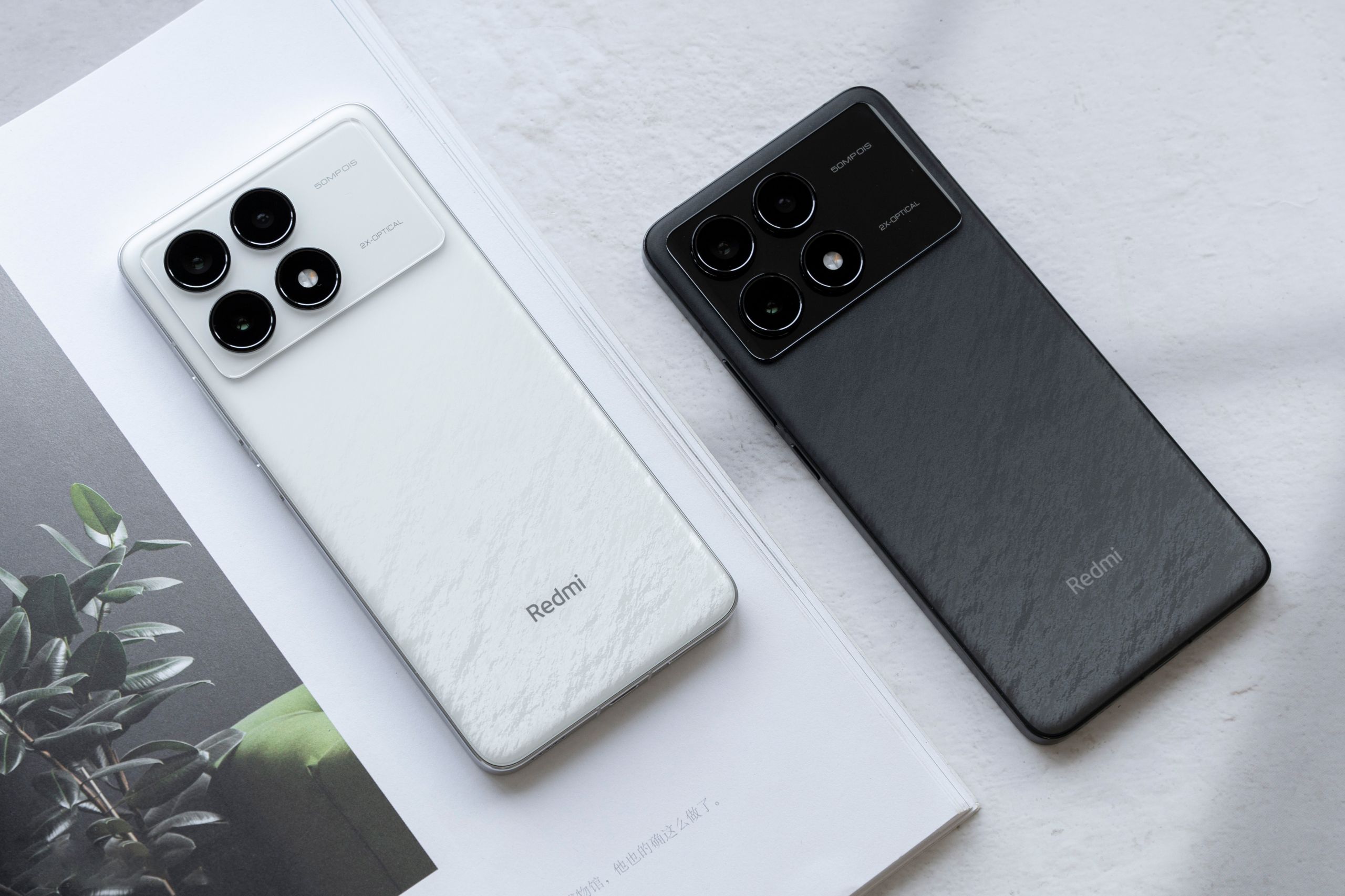
To sum up, the first moment I got the Redmi K70 Pro, I think it should be called the Xiaomi 14 Plus, with a bigger and better screen, strong performance, and a good performance of the imaging system, in all aspects of the Xiaomi 14 can not be too big a gap, the only difference may be that there is less of a wireless charging, but the actual experience of the gap is not too big, I believe. In terms of price, the Redmi K70 Pro will also be lower than the Xiaomi 14, with such product power, I believe that the sale is definitely not a problem.

